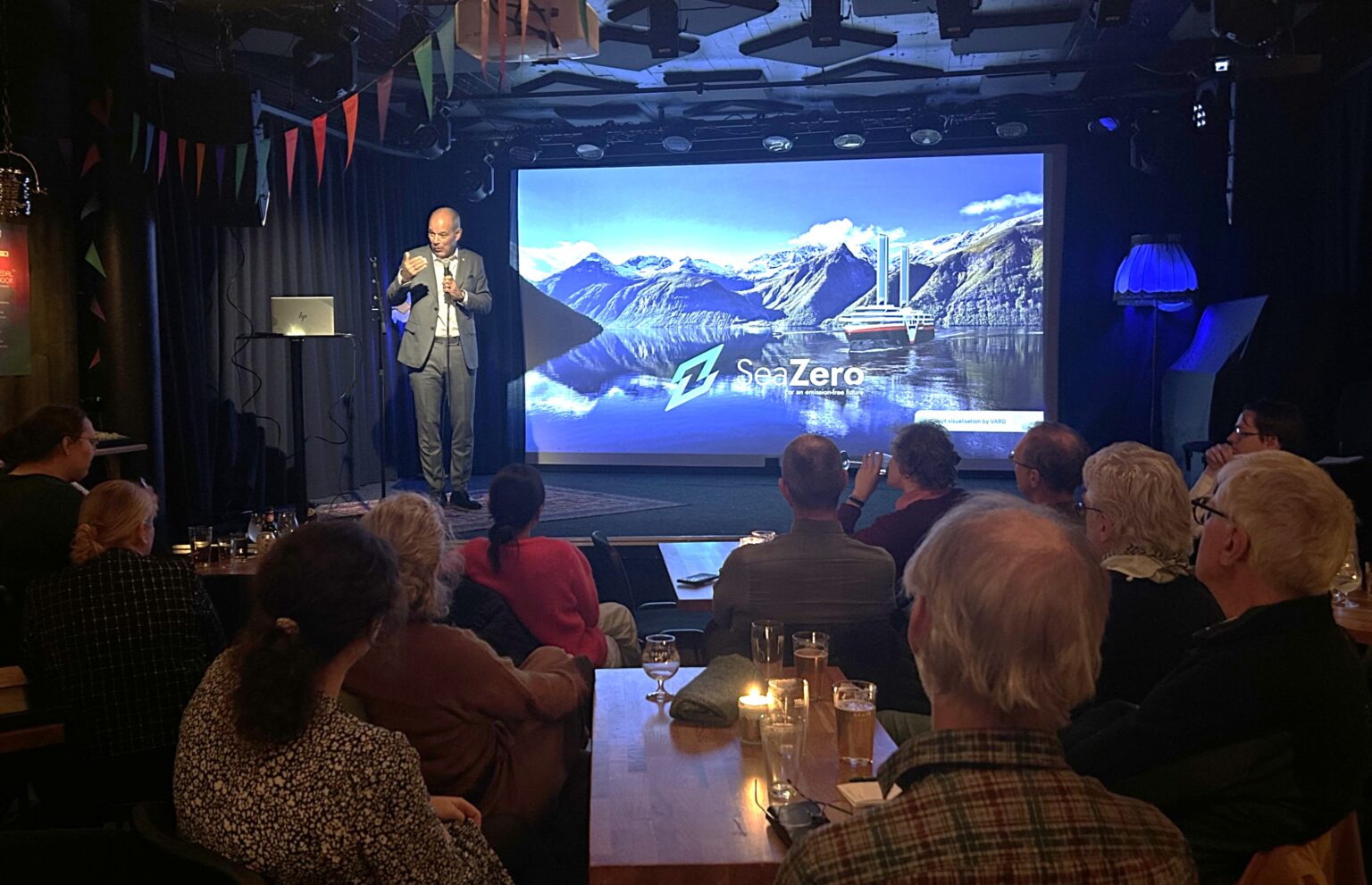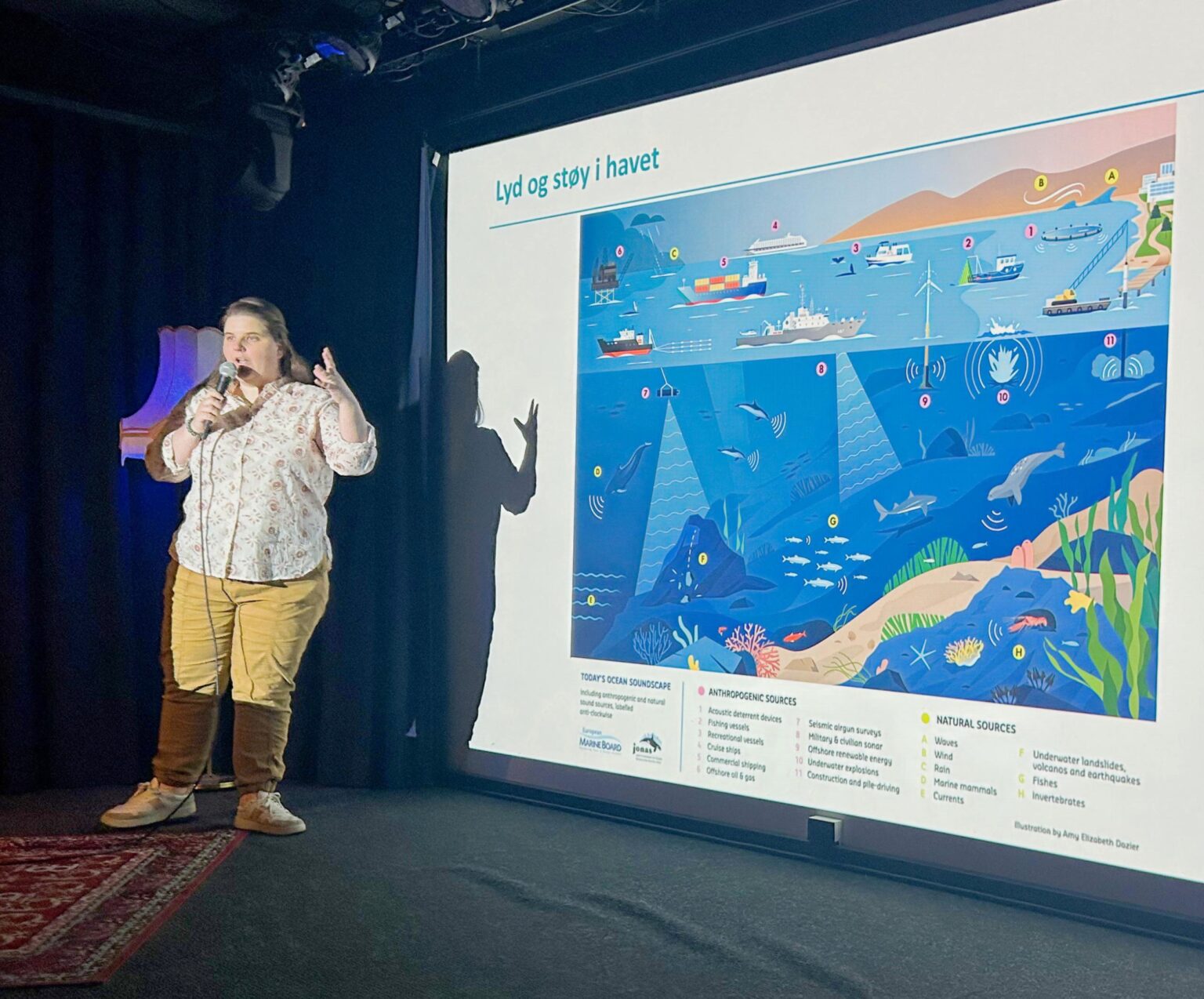In the context of increased shipping traffic, oil and gas extraction, military activity, and other marine activities, the underwater acoustic landscape is changing drastically – especially in the Arctic.
Marine noise pollution can, among other things, disrupt communication, navigation and reproduction among marine species, especially marine mammals such as whales and seals.
Perspectives from Research and Industry
The 9th of October, speakers from academia and the industry met to explore challenges and solutions to marine noise pollution.
During the presentations we learned about the impacts on sea mammals and the ecosystems of the ocean, the lack of legal framework to regulate the noise levels, and how the industry works to meet the challenges that the noise pollution represents.
The panelists all agreed that we have enough knowledge of the consequences of noise pollution to take action.
While opinions differed in what type of action that was needed, it was a consensus that the general population needed more awareness of the problems to influence policy makers to regulate noise levels.


Open Meeting Space
The event was free and open to the public, which facilitated discussions and meetings between researchers, the industry and locals in Tromsø, contributing to increase the knowledge of the challenges and potential solutions to marine noise pollution.
Speakers included Maria Garagouni, Deputy Secretary at the North Atlantic Marine Mammal Commission, Ingrid Solstad Andreassen, Researcher at the Norwegian Centre for Law of the Sea, Lis Lindal Jørgensen, Senior Researcher at the Institute for Marine Research, Gerry Larsson-Fedde, Chief Operating Officer and Deputy CEO at Hurtigruten, Melissa Nacke, Head of Operations at the Association of Arctic Expedition Cruise
Operators and Tim Fristedt, Head of Section of Quality and Product Development at Multiconsult.